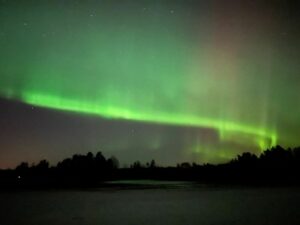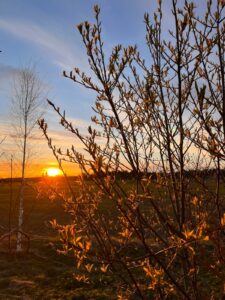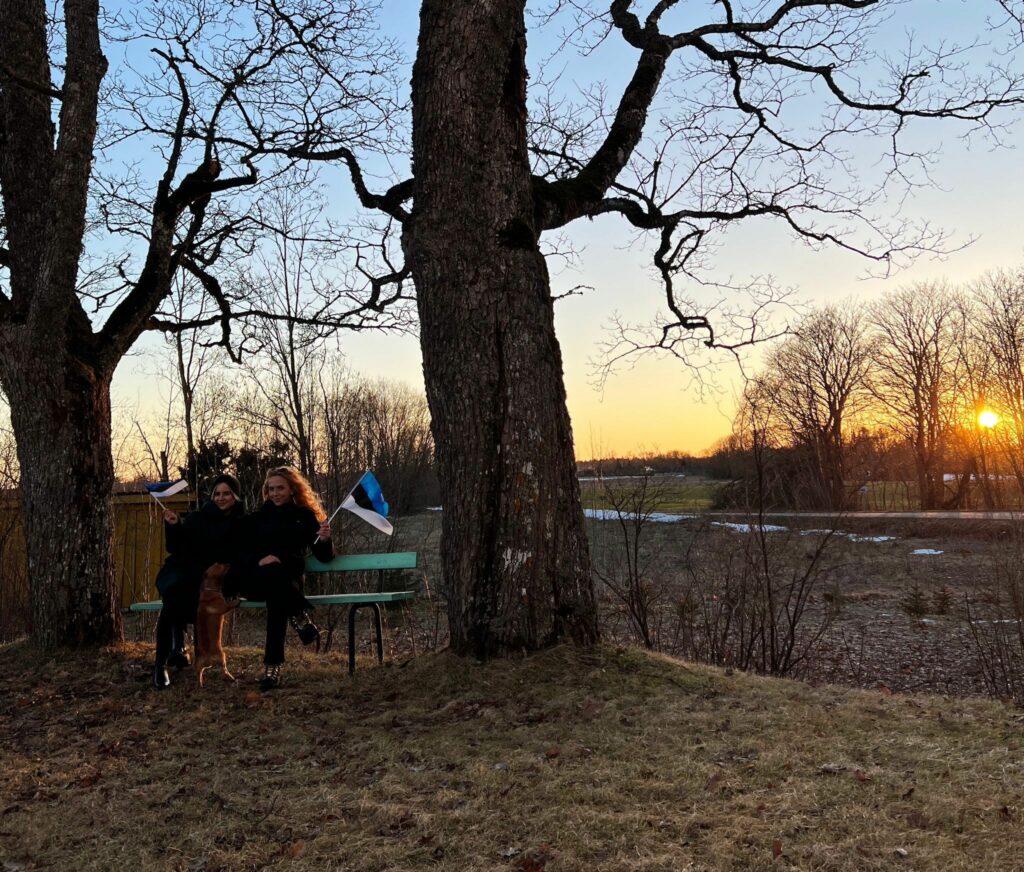Dalla Storia alla Speranza
È il 1945 – fine della Seconda guerra mondiale – tutta l’Europa è devastata. Mamme che piangono i loro figli, uomini persi, distrutti, dilaniati. Nazismo, Fascismo e Comunismo con i loro falsi miti hanno prima incendiato i cuori di tanti e poi li hanno abbandonati tristemente ai loro destini. L’Unione Europea nasce proprio dalle lacrime e dal sangue di quegli uomini che durante gli anni dei conflitti e dei regimi totalitari avevano sognato la Pace e la Stabilità, la Prosperità Economica e la Democrazia.
Nell’attuale periodo di marcata instabilità internazionale, numerosi sono gli interrogativi e le preoccupazioni che gravano in particolare sulle spalle delle giovani generazioni. È in questo contesto che abbiamo scelto di visitare l’Estonia. Questo paese, sebbene di piccole dimensioni, si distingue per la sua straordinaria bellezza, i sogni che custodisce e i paesaggi mozzafiato che offre. Ma non è tutto: la sua posizione geografica, confinante con la Russia, assume un’importanza critica in un momento in cui il conflitto in Ucraina sta ridefinendo gli equilibri globali. L’Estonia rappresenta quindi un punto di osservazione privilegiato per comprendere le dinamiche attuali e le loro ripercussioni sul futuro delle nuove generazioni.
Estonia: una Nazione, molti volti
La storia estone è una storia complessa, caratterizzata da periodi di dominazione straniera e da fortissime lotte per l’indipendenza. Prima di diventare una nazione indipendente, l’Estonia fu sotto il dominio di vari stati, tra cui danesi, tedeschi, svedesi e russi. Questo ha lasciato un segno indelebile sulla cultura e sull’identità estone, influenzando tutto, dalla lingua alla religione, dall’architettura alla musica. Tra i musei che si consigliano per comprendere meglio la complessità di questa magnifica storia è il museo della Guerra, in cui è possibile capire quanto l’Occupazione Sovietica, che è durata fino al 1991, abbia lasciato un’impronta di morte, distruzione e frustrazione. La sua entrata nell’UE nel 2004 ha definitivamente suggellato i principi di libertà, democrazia, stato di diritto, economia libera e libertà di movimento. Sembra surreale che fino agli anni ’90, diritti e libertà che noi davamo per scontati venivano negate dall’Unione Sovietica sistematicamente.

Giovani sognatrici
Durante il nostro viaggio in Estonia, abbiamo avuto l’opportunità di intervistare due giovani estoni, Lille e Lisu, il cui legame con la loro terra e la visione del futuro incarnano la resilienza e l’innovazione del loro popolo. Lille e Lisu ci hanno portato alla scoperta delle meraviglie di Tallinn e Tartu, dove l’avanguardia tecnologica va di pari passo con la natura ed i magnifici paesaggi.
“Cosa significa per te essere estone?” abbiamo chiesto a Lille:
“Per me, essere estone significa vivere in armonia con le stagioni, dal solstizio d’estate, in cui il sole quasi non tramonta, al ghiaccio che in inverno avvolge i nostri laghi. La nostra vita è profondamente intrecciata con la natura, e questo rispetto per l’ambiente si estende alla nostra avanguardia digitale, che ci permette di gestire la vita quotidiana con una semplicità e apertura che considero un vanto nazionale.“

“Come vedi il futuro dell’Europa?” è stata la domanda rivolta a Lisu, che ha riflettuto sulla complessità dell’attuale panorama globale:
“Il futuro dell’Europa lo vedo come un orizzonte di speranza, nonostante le incertezze poste da sfide globali come il cambiamento climatico e le tensioni geopolitiche. La strada da percorrere richiederà solidarietà e innovazione, ma rimango ottimista sul nostro potenziale di navigare verso un domani più luminoso.”
La conversazione si è poi spostata su temi più difficili, come la situazione geopolitica attuale. “Cosa pensi della guerra in Ucraina e della Russia?” abbiamo chiesto nuovamente a Lille. La sua risposta è stata riflessiva e toccante:
“Ogni forma di guerra o violenza è contraria ai miei principi. La situazione in Ucraina non solo riecheggia dolorosamente il nostro passato sotto il regime sovietico, ma sottolinea anche l’importanza di sostenere i nostri vicini e difendere i valori democratici. È nostro dovere, come paesi baltici, supportare l’Ucraina in questa lotta per un futuro migliore.”
Prima di concludere la nostra conversazione, non potevamo lasciare Lille e Lisu senza chiedere loro di condividere la visione del mondo che sperano di vedere in futuro. La domanda, semplice ma profonda, “Che mondo sognate?” Entrambe le giovani hanno espresso il desiderio di un mondo in cui le differenze tra le persone siano non solo accettate ma celebrate.
“Sogniamo un mondo governato dalla cooperazione e dalla pace, essenziali per superare le attuali sfide globali,” hanno condiviso con passione. “Dopo tutto, siamo tutti abitanti di questo pianeta, la nostra casa comune, che dobbiamo preservare e amare con grande rispetto per garantire che anche le generazioni future possano chiamarla casa.“
La ricerca di un futuro migliore
In conclusione, l’incontro con queste giovani estoni lascia un promemoria potente di come la felicità e la speranza possano radicarsi nelle cose semplici. Immaginiamo la bellezza di godersi una semplice passeggiata nella natura o giocare a palle di neve con amici e familiari, senza tutti quei tormenti e quelle ansie della vita quotidiana. In un tempo di incertezze globali e sfide senza precedenti, le parole di Lille e Lisu ci ricordano che la speranza non è solo un faro nel buio, ma un invito all’azione. La possibilità di un mondo migliore, di un futuro in cui pace e cooperazione regnino sovrane, non risiede soltanto nei sogni di due giovani estoni, ma nelle mani di ognuno di noi. Ora, la domanda non è se un tale mondo sia possibile, ma piuttosto se siamo pronti ad abbracciare le trasformazioni necessarie per realizzarlo. Questa domanda, stavolta, la pongo a voi.

The hope for a better world and a future of peace. Journey to Estonia.
From History to Hope
It is 1945 – the end of World War II – all of Europe is devastated. Mothers mourn their children, men lost, shattered, torn apart. Nazism, Fascism, and Communism with their false myths first ignited the hearts of many and then sadly abandoned them to their fates. The European Union was born from the tears and blood of those men who during the years of conflicts and totalitarian regimes had dreamed of Peace and Stability, Economic Prosperity, and Democracy.
In the current period of marked international instability, there are numerous questions and concerns that weigh particularly on the shoulders of the younger generations. It is in this context that we have chosen to visit Estonia.
This country, although small in size, stands out for its extraordinary beauty, the dreams it holds, and the breathtaking landscapes it offers. But that’s not all: its geographical position, bordering Russia, takes on critical importance at a time when the conflict in Ukraine is redefining global balances. Estonia thus represents a privileged observation point to understand the current dynamics and their repercussions on the future of the new generations.
Estonia: One Nation, Many Faces
The Estonian story is a complex history, characterized by periods of foreign domination and strong struggles for independence. Before becoming an independent nation, Estonia was under the dominion of various states, including the Danes, Germans, Swedes, and Russians. This has left an indelible mark on Estonian culture and identity, influencing everything from language to religion, architecture to music.
Among the museums recommended for a better understanding of the complexity of this magnificent history is the War Museum, where it is possible to grasp how the Soviet Occupation, which lasted until 1991, has left a mark of death, destruction, and frustration. Its entry into the EU in 2004 definitively sealed the principles of freedom, democracy, rule of law, free economy, and freedom of movement. It seems surreal that until the 1990s, rights and freedoms that we took for granted were systematically denied by the Soviet Union.
Young Dreamers
During our trip to Estonia, we had the opportunity to interview two young Estonians, Lille and Lisu, whose connection to their land and vision for the future embody the resilience and innovation of their people. Lille and Lisu took us on a journey through the wonders of Tallinn and Tartu, where technological forefront goes hand in hand with nature and the magnificent landscapes.
“What does it mean to you to be Estonian?” we asked Lille:
“For me, being Estonian means living in harmony with the seasons, from the summer solstice, where the sun almost never sets, to the ice that envelops our lakes in winter. Our life is deeply intertwined with nature, and this respect for the environment extends to our digital forefront, which allows us to manage daily life with simplicity and openness that I consider a national pride.”
“How do you see the future of Europe?” was the question we posed to Lisu, who reflected on the complexity of the current global landscape:
“I see the future of Europe as a horizon of hope, despite the uncertainties posed by global challenges such as climate change and geopolitical tensions. The path forward will require solidarity and innovation, but I remain optimistic about our potential to navigate towards a brighter tomorrow.”
The conversation then shifted to more difficult topics, such as the current geopolitical situation. “What do you think about the war in Ukraine and Russia?” we asked Lille again. Her response was thoughtful and touching:
“Any form of war or violence is contrary to my principles. The situation in Ukraine not only painfully echoes our past under the Soviet regime but also underscores the importance of supporting our neighbors and defending democratic values. It is our duty, as Baltic countries, to support Ukraine in this struggle for a better future.”
Before concluding our conversation, we couldn’t leave Lille and Lisu without asking them to share the vision of the world they hope to see in the future. The question, simple yet profound, “What kind of world do you dream of?” Both young women expressed a desire for a world where differences among people are not just accepted but celebrated.
“We dream of a world governed by cooperation and peace, essential for overcoming the current global challenges,” they shared passionately. “After all, we are all inhabitants of this planet, our common home, which we must preserve and cherish with great respect to ensure that future generations can also call it home.”
The Pursuit of a Better Future
In conclusion, our encounter with these young Estonians serves as a powerful reminder of how happiness and hope can be rooted in the simple things. Imagine the beauty of enjoying a simple walk in nature or playing snowball with friends and family, free from the torments and anxieties of everyday life. In a time of global uncertainties and unprecedented challenges, the words of Lille and Lisu remind us that hope is not just a beacon in the dark, but a call to action.
The possibility of a better world, a future where peace and cooperation reign supreme, does not lie solely in the dreams of two young Estonians, but in the hands of each and every one of us. Now, the question is not whether such a world is possible, but rather if we are ready to embrace the necessary transformations to make it a reality. This question, this time, I pose to you.


